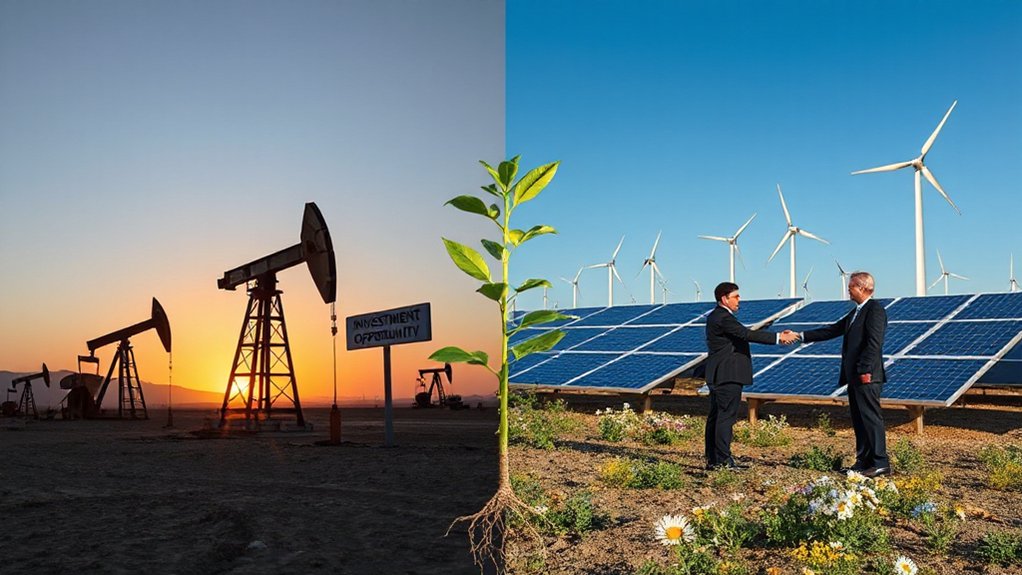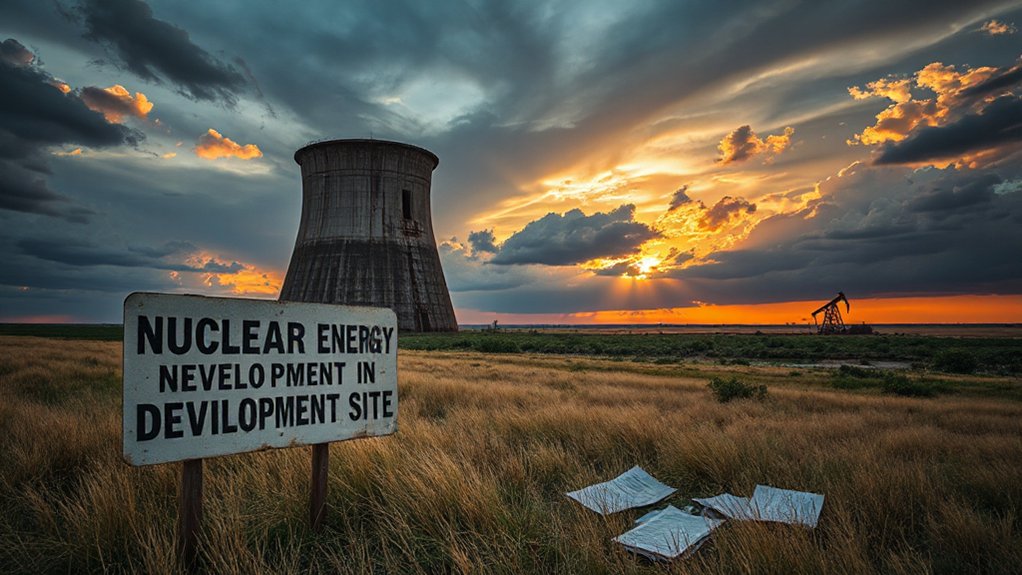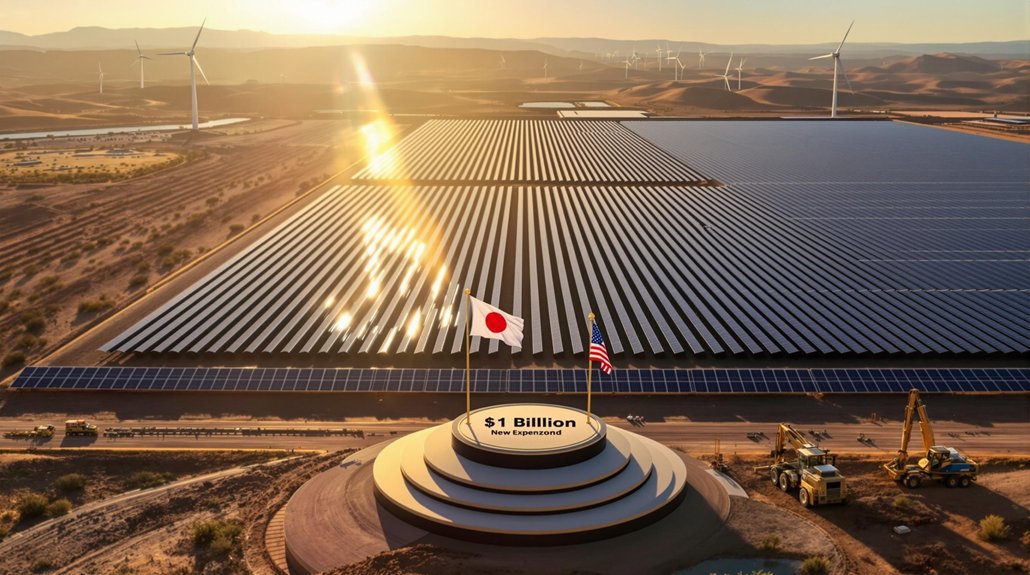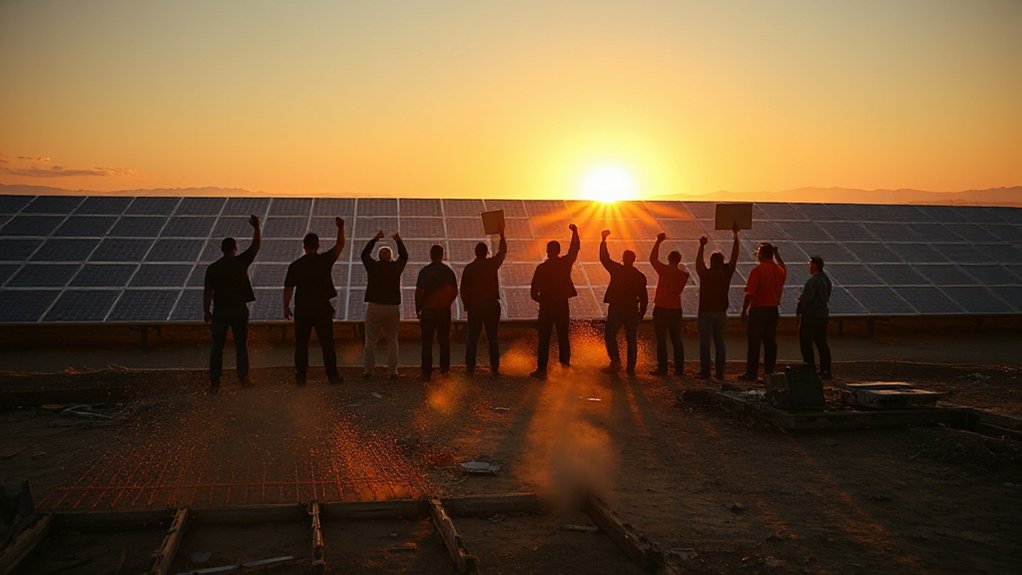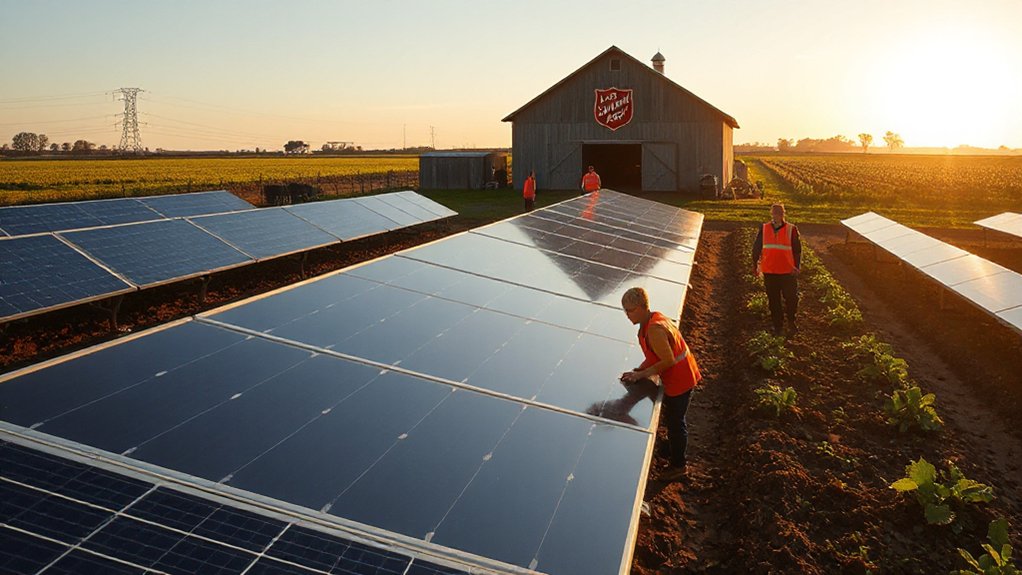While the original Green Revolution saved a staggering 1-2 billion lives since the 1960s, today’s green funding tackles much bigger problems. The money’s following the crises—climate change, water scarcity, and that pesky little food security issue. Can’t eat oil, after all.
Donors are dumping traditional energy investments faster than last year’s fashion trends. Why? Because programs like P4G Partnership offer something sexier: blended public-private investment structures that get results. They’re doling out grants averaging $350,000 over 18-24 months while simultaneously playing matchmaker between governments, NGOs, and corporations. These aren’t your grandpa’s agricultural investments.
Modern ag investments don’t just feed—they transform. P4G’s approach makes old energy funding look like yesterday’s leftovers.
The numbers don’t lie. P4G-supported projects have already slashed over 10.8 million metric tons of CO2. Meanwhile, Sub-Saharan Africa faces a projected food import bill of $110 billion by 2025. In the region, farmers primarily use low-yielding varieties with high-performing seeds on less than 10% of arable land. Donors see the writing on the wall—fund climate-smart agriculture now or pay for humanitarian disasters later. Not exactly a difficult choice.
It’s not just about throwing money at problems. It’s about funding the cool toys: 5G-enabled farm equipment, edge computing, autonomous robots harvesting your dinner. CRISPR gene editing makes crops that laugh in the face of drought. In America, 65% of farmers already use AI for crop monitoring, 55% deploy drones, and 30% plant gene-edited crops. The future is now, people.
Of course, it’s not all sunshine and rainbows. Critics point out that smallholder farmers often get left behind. P4G focuses on supporting developing nations in creating robust export-oriented industries while helping developed countries transition away from fossil fuels. Monocropping and pesticides still cause ecological headaches. But honestly? The alternative is worse.
Smart donors recognize that funding precision agriculture technologies and innovative financing models like Seeds for Impact creates double wins—addressing both climate and food challenges simultaneously. Traditional energy just can’t compete with that kind of return. When your investment can save lives, grow economies, AND help the planet? That’s what we call a no-brainer. Initiatives like the Southeastern Pennsylvania Energy Partnership demonstrate how renewable electricity targets can drive regional transformation while creating hundreds of thousands of new clean energy jobs.
References
- https://theglobalaffairsjournal.org/2025/06/02/financing-the-green-revolution-cross-national-investment-in-climate-smart-innovation/
- https://www.aecfafrica.org/bridging-the-funding-gap-seeds-for-impact/
- https://farmonaut.com/precision-farming/revolutionizing-agritech-farmonauts-2025-precision-agriculture-market-forecast-for-the-us-and-china
- https://farmonaut.com/usa/agriculture-industry-in-the-us-2025-innovations-growth
- https://geneticliteracyproject.org/2025/08/25/viewpoint-the-green-revolution-saved-1-2-billion-lives-globally-activists-say-it-was-a-failure-theyre-lying/
- https://grist.org/food-and-agriculture/green-revolution-india-wheat-seeds-climate/
- https://aparc.fsi.stanford.edu/news/green-revolution-20
- https://ag.purdue.edu/news/2025/02/new-study-assesses-impact-of-agricultural-research-investments-on-biodiversity-land-use.html
- https://www.weforum.org/stories/2025/04/food-revolution-farmers/
